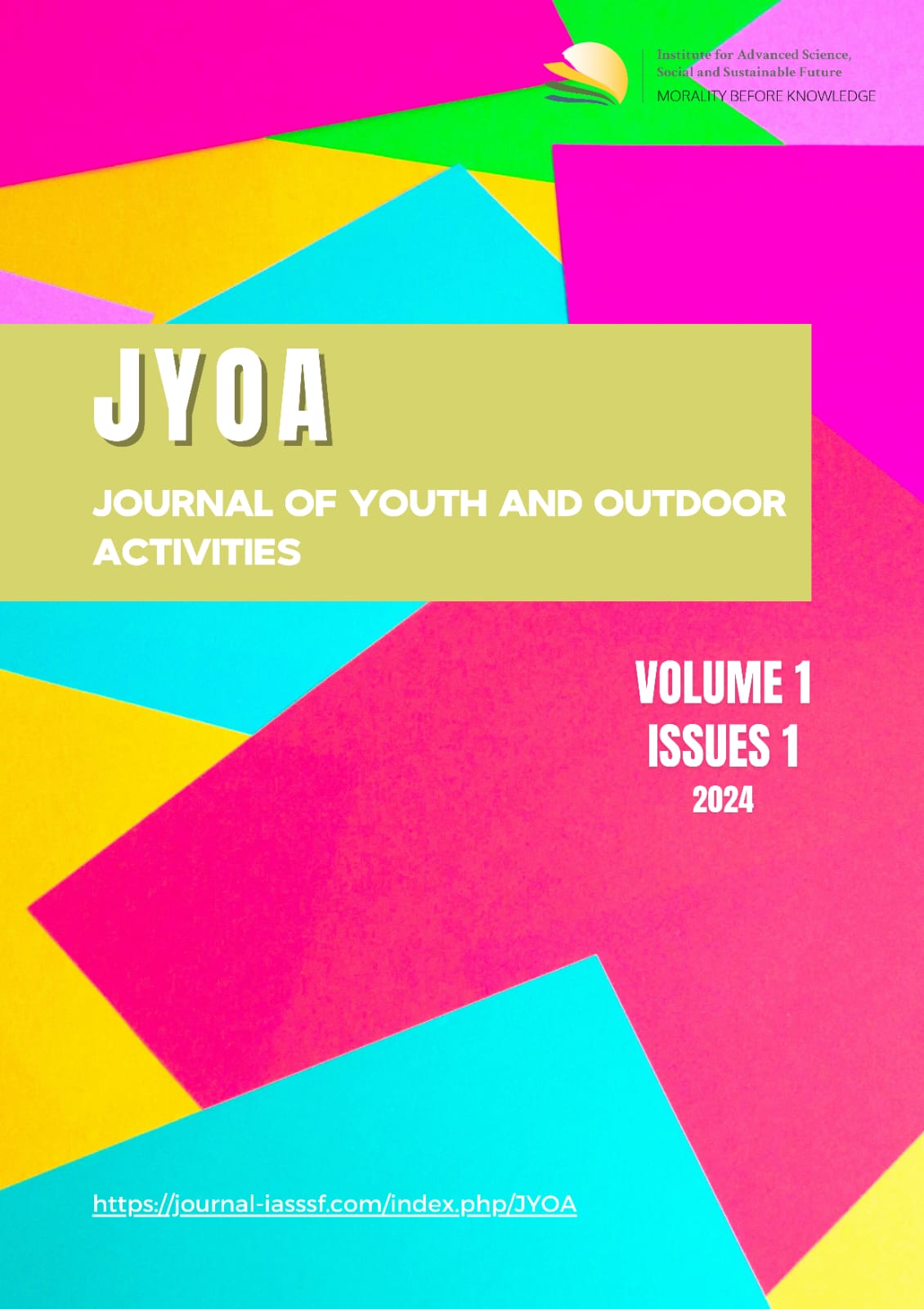Drug abuse prevention strategy in youth and student community in Indonesia
DOI:
https://doi.org/10.61511/jyoa.v1i1.2024.774Keywords:
community awareness; drug abuse; prevention programme; social media; youth.Abstract
Background: The prevalence of drug abusers in the world is approximately 5%. Meanwhile, Indonesia in 2015 is estimated at 2.8%, which increases almost doubled in the last ten years. The most significant drug user is at the level of youngsters who live in urban areas. The treatment for the youngster cannot be done by just using the principle of law enforcement. A new strategy is needed. Methods: The objective of this study is to analyse some factors which quantitatively gives value to feasible priority approaches. The study is designed as a case study locally in Indonesia, exploring current drug abuse prevention efforts. The strategy proposed in this study is analysed using Analytical Hierarchy Process method. Findings: The recommended strategy offered to prevent drug abuse case is to intervene in the social media campaign. The primary action aims to raise community awareness concerning drug abuse. During this time, many policy approaches are ineffective due to lack of cooperation with related stakeholders and determination of prevention programme object through inappropriate media. Conlusions: To conclude, social media intervention, as the priority of drug prevention programme for youth and student community, should be well managed to be able to reduce drug abuse effectively.
References
Ardjil, B. (2018). Principles of Substance Abuse Prevention (PGZ). http://www.bnn.go.id/read/artikel/10866/prinsip-prinsip-pencegahan-penyalahgunaan-zat-pgz.
Badri, N. (2017). Drug Policy in Tunisia: Towards an Evidence-based Human Rights and Public Health Approach. Tunisia: Center for Applied Policy Research. https://www.cap-lmu.de/download/2017/CAPerspectives-Tunisia-2017-02.pdf
BNN (2016). Drug Abuse Prevalence Survey in Household in 20 Provinces Budget Year 2015. Jakarta, Indonesia: BNN Center of Research, Data and Information. https://ppid.bnn.go.id/konten/unggahan/2020/10/Drug-Abuse-Prevalence-Survey-2019.pdf
BNN. (2017). Annual Report Year 2017. Jakarta, Indonesia: BNN. https://ppid.bnn.go.id/konten/unggahan/2020/10/LKIP-BNN-2017.pdf
Cui, J., Zhou, L., Zhang, L., Li, L., & Zao, J. (2013). Training the trainer: An educational course for training pain nursing specialists supported by the International Association for the Study of Pain. Pain Management Nursing, 14(4), e142-e150. https://doi.org/10.1016/j.pmn.2011.09.004
Gerstein, D.R. & Green, L.W. (1993). Preventing drugs abuse. Washington, United States: National Academy Press. https://doi.org/10.17226/1883
Greenberg, M.T. (2004). Current and future challenges in school-based prevention: The researcher perspective. Prevention Science, 5(1), 5-13. https://doi.org/10.1023/B:PREV.0000013976.84939.55
Hopfer, S. (2011). Effects of narrative HPV vaccination intervention and aimed at reaching college women: A randomized controlled trial. Prevention Science, 13, 173-182. https://doi.org/10.1007/s11121-011-0254-1
Jensen, T.B. & Aanestad, M. (2007). How Healthcare Professionals "Make Sense" of an Electronic Patient Record Adoption. Information Systems Management, 24(1), 29-42. https://doi.org/10.1080/10580530601036794
Kaligis, O.C. (2007). Drugs and Justice in Indonesia (2nd ed.). Bandung, Indonesia: Alumni Bandung. https://lib.ui.ac.id/detail?id=20284128&lokasi=lokal
Kemp, S. (2018). Global Digital Report 2018. https://wearesocial.com/blog/2018/01/global-digital-report-2018.
Kramer, T. (2010). An Assessment of The Impact of The Global Financial Crisis On Sustainable Alternative Development (Key Determinant Factors for Opium Poppy Re-cultivation in Southeast Asia). UNODC Global Partnership on Alternative Development Project. https://www.unodc.org/documents/laopdr/COLAO/Impact_Assessment.pdf
Lee, J.K., Hecht, M.L., Miller-Day, M., & Elek, E. (2011). Evaluating mediated perception of narrative health messages: The perception of the narrative performance scale. Communication Methods and Measures, 5, 126-145. https://doi.org/10.1080%2F19312458.2011.568374
Lee, Y.C. (2010). Science-Technology-Society or Technology-Society-Science? Insights from an Ancient Technology. International Journal of Science Education, 32, 1927-1950. https://doi.org/10.1080/09500690903277477
Mansfield, D. (1999). Alternative development: the modern thrust of supply-side policy. Bulletin on Narcotics, 51(1), 19-43. https://dialnet.unirioja.es/servlet/articulo?codigo=6407396
Mihalic, S.F., Fagan, A.A., & Argamaso, S. (2008). Implementing the LifeSkills Training drug prevention programme: Factors related to implementation fidelity. Implementation Science, 3(1), 5-9. https://doi.org/10.1186/1748-5908-3-5
Miller-Day, M. & Hecht, M.L. (2013). Narrative mean to preventative ends: A narrative engagement framework for designing prevention interventions. Health Communication, 28, 657-670. https://doi.org/10.1080/10410236.2012.762861
Ministry of Communication and Information Technology. (2018). Internet Data User 2017. https://kominfo.go.id/index.php/content/detail/12640/siaran-pers-no-53hmkominfo022018-tentang-jumlah-pengguna-internet-2017-meningkat-kominfo-terus-lakukan-percepatan-pembangunan-broadband/0/siaran_pers.
Nguyen, D.Q. (2017). Utilization of pharmacists in addressing medication abuse in the pacific northwest. Journal of Pharmacy Practice, 30(5), 528-533. https://doi.org/10.1177/0897190016652066
Notoatmodjo, S. (2012). Health Promotion, and Health Behaviour. Jakarta, Indonesia: Rineka Cipta. https://perpustakaan.kemkes.go.id/inlislite3/opac/detail-opac?id=11502
Perdue, R.T., Hawdon, J., & Thames, K.M. (2018). Can big data predict the rise of novel drug abuse. Journal of Drug Issues, 1-11. https://doi.org/10.1177/00220426187772294
Prahalad, C.K. & Ramaswamy, V. (2004). The future of competition: Co-creating unique value with customers. Boston, MA: Harvard Business School Press. https://books.google.co.id/books/about/The_Future_of_Competition.html?id=GO8wefdWmLIC&redir_esc=y
Rigg, K.K. & Menendez, K.M. (2018). Drug prevention programme in schools: Selecting programme providers. Health Education Journal, 1-12. https://doi.org/10.1177/0017896918763454
Robertson, K., Chamberlain, B., & Kasari, C. (2003). General education teachers’ relationships with included students with autism. Journal of Autism and Developmental Disorders, 33(2), 123-130. https://doi.org/10.1023/A:1022979108096
Saaty, T.L. (1998). Decision making with dependence and feedback: The analytic network process international. Pittsburgh, USA: University of Pittsburgh. http://www.untag-smd.ac.id/files/Perpustakaan_Digital_1/DECISION%20MAKING%20Decision%20Making%20with%20the%20Analytic%20Network%20Process.pdf
Saaty, T.L. (2008). Decision making with the analytic hierarchy process. Int. J. Services, 1, 83-98. https://doi.org/10.1504/IJSSci.2008.01759
Smith, J., Buse, K., & Gordon, C. (2016). Civil society: the catalyst for ensuring health in the age of sustainable development. Globalization and Health, 12, 40. https://doi.org/10.1186/s12992-016-0178-4
Wixom, B.H. & Todd, P.A. (2005). A theoretical integration of user satisfaction and technology acceptance. Information Systems Research, 16(1), 85-102. https://doi.org/10.1287/isre.1050.0042
Downloads
Published
Issue
Section
Citation Check
License
Copyright (c) 2024 Journal of Youth and Outdoor Activities

This work is licensed under a Creative Commons Attribution 4.0 International License.












